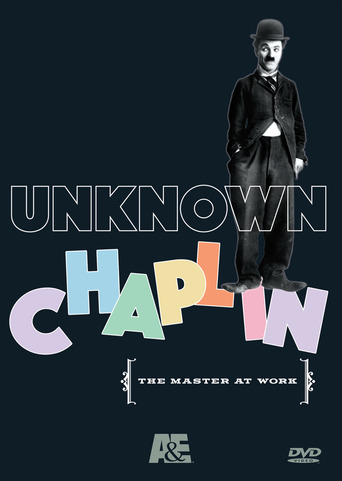CitizenCaine
Unknown Chaplin is a three part television series produced from outtakes and film clips edited from most of Charles Chaplin's well-known films. The first part focuses primarily on the Mutual period when Chaplin made twelve films in sixteen months. The film covers how Chaplin formed his own stock company to make films with much in the way John Ford would do a couple decades later. The film focuses on The Floorwalker, The Count, The Cure, and The Immigrant, while including clips of The Pawnbroker and The Adventurer. The film indicates how Chaplin rehearsed on film by viewing daily rushes and re-shooting scenes multiple times, how some gags worked by exploiting the variances in camera speed, and how Edna Purviance was not a trained actress and had to be shaped by Chaplin's direction.The second part of the film focuses on The Kid, The Gold Rush, and City Lights. It includes interviews with Jackie Coogan, Lita Grey, Georgia Hale, Robert Parrish, Virginia Cherrill, and Sydney Chaplin. A great deal of time is spent on the location shooting for The Gold Rush and the many highlights from that film. Most interesting is the initial introduction of the tramp and the flower girl scene in City Lights. Chaplin had to solve the dilemma of how to make it plain to the audience that the blind flower girl thought the tramp was a rich man. It took a year and a half of patience and countless retakes for Chaplin to solve it.The third part of the film focuses mostly on The Circus and the uncompleted film The Professor, but it also includes tidbits from City Lights, Modern Times, The Great Dictator, and Limelight. The third part showcases mostly scenes which were cut from Chaplin's final edit of his films influences some of his earlier silent pictures had on his later, more famous films. The film shows how Chaplin played an important role in the development of early cinema, combining his own artistic vision with the unbridled mayhem of his Mack Sennett days at the Keystone Company. Many of Chaplin's stock company get substantial screen time, including Edna Purviance, Eric Campbell, Albert Austin, Henry Bergman, John Rand, and Loyal Underwood. Major disappointments are the film's omissions of Chaplin's post-Limelight work, Monsieur Verdoux, and A Woman Of Paris, a box office failure upon its release now regarded as one of Chaplin's most important films and an adult film ahead of its time. James Mason narrates the film with appropriate earnestness. ***1/2 of 4 stars.
Jon Noel Shelton
Charles Chaplin was truly the first independent filmmaker - with the exception perhaps of Georges Melies. Chaplin wrote, directed, starred in and scored nearly all of his films. No one understood the craft of film-making (silent or otherwise) better than Chaplin. He never compromised his artistic vision, perfectionism, or his integrity. Charlie literally made his films up as he went along, rehearsing on film and discarding whatever didn't work. Such techniques would prove too costly and time consuming today. This documentary consists of some of Chaplin's best experiments - some of which he re-shot and much of which he ordered burned. Like many a magician, Chaplin didn't want his secrets getting out. Luckily, many of his best tricks are revealed here for posterity. It's all lovingly narrated by James Mason. And the scenes that were cut from THE CIRCUS, CITY LIGHTS and MODERN TIMES are as good as anything that ended up in the final releases. I wish this was available on DVD, as my tapes are beginning to wear out.
cricket-14
Anyone who knows little about Chaplin or the silent movie era (including myself, being born in 1960) will find this documentary very educational.Thank goodness someone had the foresight to interview people who knew and worked with Chaplin while they were still alive. Documentaries like this are a crucial part of film history and preservation. People who actually worked in the silent era know it better than anyone.I highly recommend it to anyone.


